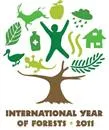Seeking a link between horned Phoenician gods and the horned deities of Patagonia
See Index on all my posts on Phoenicians in America.
Baal, supreme Phoenician god. Note the horns sprouting from his head. Source: Internet
Biblical "Molech" horned god revered by the Ammonites and also the Phoenicians. Source: Internet
We have mentioned the possibility that the Phoenicians or their Carthaginian descendants reached America some 2200 – 2700 years ago, trading Brazil wood dye, precious metals and gems of American origin in their Mediterranean markets. Perhaps they even set up colonies here (in future posts I will keep on providing “evidence” on their alleged presence in South America). In today’s post we will take a peek at their gods and review the possibility that these deities could have left an indelible impression on the local natives, especially in Patagonia, which is where there is evidence (in the form of Phoenician inscriptions) of their presence.
See my post on the Cattle like creatures in Patagonia (cows and bulls were unknown in Patagonia until they were introduced by the Spaniards in the early 1500s): the options are that (a) there was some now extinct "bovid" in Patagonia or (b) they came across cattle brought by pre-Hispanic mariners, either in effigy (such as a horned-god cult) or in person, with cattle on board these sailor's ships.
Horned gods. Molech
Molech was the main god of the Ammonite pantheon, he was also worshiped by the Phoenicians as we can see from inscriptions bearing his name “Melek. A name that meant “king” (that is, the great leader, or “top” god).[3]
Moloch derives from the word Melkarth and is abbreviated in the Phoenician inscriptions as Melkar, Mokarth and also Mokar.[3]
Each of the independent city-states of Phoenicia had their “male” deity which despite having different names, shared the same features: at Tyre he was Melqart, at Sidon Eshmun and at Byblos, Baal. They also had a female partner (who is most commonly known as Astarte). The name Baal, in Phoenician meant “lord” or “master”, and may have been referred to as adonai (my lord), which was adopted by the Greek as Adonis, their young hunter god.[4]
We find juicy references to Moloch in the Bible, who mentions it in reference to the hated enemies of the people of Israel, the Ammonites, whose religion included the worship of Moloch or Molech whom they represented as a horned bull-like deity.
Ammonites: People of Semitic origin who lived on the eastern side of the Jordan River (Transjordan), just to the northeast of the Dead Sea in what is now Jordan. [1]
We find reference to him in the Bible, in 1 KingS 11:7: “Then Solomon built a high place for Chemosh the detestable idol of Moab, on the mountain which is east of Jerusalem, and for Molech the detestable idol of the sons of Ammon”.
According to the Bible, the cult of Moloch was bloody and demanded the sacrifice of children. As the Jewish people sporadically took to adoring Moloch (abandoning the worship of Jehovah), God’s word, as recorded in the Bible, strictly prohibits this horrible kind of sacrifice.
For instance, in Leviticus 18:21 God orders: “Do not give any of your children to be sacrificed to Molech, for you must not profane the name of your God. I am the LORD.”.
His ban is repeated in Leviticus 20:2-5 (Where he tells Moses: “Say to the Israelites: 'Any Israelite or any alien living in Israel who gives any of his children to Molech must be put to death. The people of the community are to stone him…”) and in 2 Kings. 23:10; Jeremiah 32:35, Isaiah 30:33 and 57:5, etc.
However not all agree with this monstrous behavior:
Some are of opinion that the devotees contented themselves with making their children leap over a fire sacred to Moloch by this action consecrating them to that false deity and as by a lustration purifying them this being a usual ceremony on other occasions among the heathen. Others believe that they made them pass between two fires opposite each other with the same intention...[2]
There is even a place mentioned in the Valley of Hinnom, on the hill where Jerusalem is built, this site is known as Topheth, or “fire pit”.
The burning took place in a brazen idol (depicted above), which had the head of a bull and arms of a person. They would build a fire, and heat the idol until it was red-hot and glowing, then they would take their newborn babies and place them in those searing arms, so that they burned to death. [2]
Apparently the Carthaginians also sacrificed children, though there are many who doubt this (read both sides of the story - external link.)
Baal the other horned god
There is a stele of Baal, from a site in modern Syria, Ugarit. It dates back to the period between the 1500 and 1800 years BC. If you are in Paris, drop by the Musee du Louvre and take a look at it. Baal has two cow-like horns sprouting from his head.
Sources.
[1] Watson E. Mills, Roger Aubrey Bullard, (1990). The Mercer dictionary of the Bible. Mercer University Press, 1990. pp. 23.
[2] Agustin Clamet, (1832) Dictionary of the Holy Bible. Crocker and Brewster, pp. 677.
[3] George Rawlinson, The Religions of the Ancient World. pp. 146.
[4] Glenn Markoe, (2000) Phoenicians. Vol 2 of Peoples of the past. University of California Press, pp. 117.
Patagonian Monsters - Cryptozoology, Myths & legends in Patagonia2011 International Year of Forests Copyright 2009-2011 by Austin Whittall ©



No comments:
Post a Comment